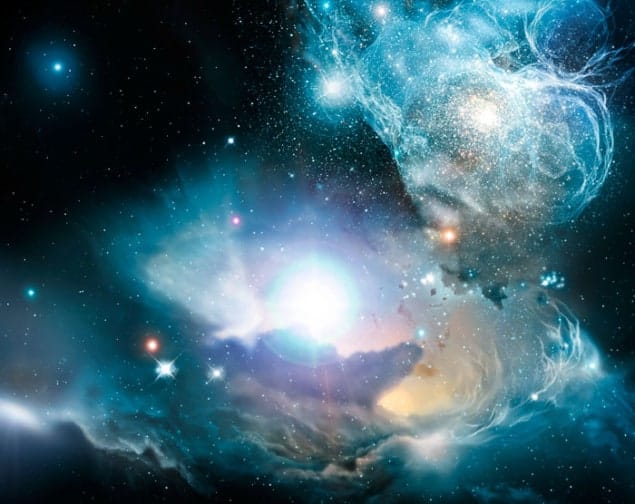
Hot on the heels of this week’s announcement of the physics Nobel prize “for the discovery of the accelerating expansion of the universe through observations of distant supernovae”, the European Space Agency (ESA) has chosen its next two science missions, one of which will explore the nature of dark energy – which many physicists believe is the cause of the accelerating expansion. Called Euclid, this mission will study the large-scale structure of the universe with the aim of understanding how it evolved following the Big Bang. The other mission is named Solar Orbiter and will gauge the influence of the Sun on the rest of the solar system, with a special focus on the effects of the solar wind.
The projects are the first in ESA’s Cosmic Vision 2015–2025 plan and fall into the category of medium-class missions. There are three such missions planned for launch in 2017–2022, but the third has yet to be chosen.
The dark side
In 1998 physicists were astounded by the discovery that the rate of expansion of the universe was increasing – not decreasing as had been previously thought. The cause of the acceleration remains one of the most enduring mysteries in cosmology. Euclid is a space-based telescope that aims to create the most accurate map yet of the large-scale structure of the universe. According to ESA’s mission objectives, this will enable astronomers “To understand the nature of dark energy and dark matter by accurate measurement of the accelerated expansion of the universe through different independent methods.”
Euclid will observe galaxies and clusters of galaxies out to redshifts of z ~ 2 at visible and near-infrared wavelengths. Its view will stretch across 10 billion light-years, revealing details of the universe’s expansion and how its structure has developed over the last three-quarters of its history. Euclid’s launch, on a Soyuz launch vehicle, is planned for 2019 at Europe’s Spaceport in Kourou, French Guiana.
Here comes the Sun
While the Euclid mission will probe the furthest corners of the universe, the other Cosmic Vision mission will be looking at something rather closer to home. The Solar Orbiter will investigate how the Sun creates and controls the heliosphere – the bubble in space that is “blown” by the Sun and engulfs the solar system. The mission is designed to better our understanding of the influences our Sun has on its neighbourhood. In particular, it will study how the Sun generates and propels the solar wind, which is the flow of particles in which the planets are bathed. Solar activity, such as solar flares, affects the solar wind, creating strong perturbations and making it turbulent. This can have dire consequences for radio communications, satellites and space missions, as well as triggering spectacular auroral displays visible from Earth and other planets.
The Solar Orbiter will maintain an elliptical orbit around the Sun and will venture closer to it than any previous mission. This will allow the mission to measure how the solar wind accelerates over the Sun’s surface and to sample this solar wind shortly after it has been ejected. The mission’s launch is planned for 2017 from Cape Canaveral using a NASA-provided Atlas launch vehicle.
Asking the right questions
Early in 2004, the Cosmic Vision 2015–2025 plan identified four scientific aims: What are the conditions for life and planetary formation? How does the solar system work? What are the fundamental laws of the universe? How did the universe begin and what is it made of? A “call for missions” around these aims was issued in 2007, with Euclid and the Solar Orbiter chosen this year. ESA is now evaluating five other medium-sized missions for the final launch slot in 2022. This includes the PLATO mission, which would look at nearby stars to study the conditions required for planet formation and the emergence of life, that narrowly missed out in this latest round.
“It was an arduous task for the Science Programme Committee to choose two from the three excellent candidates. All of them would produce world-class science and would put Europe at the forefront in the respective fields. Their quality goes to show the creativity and resources of the European scientific community,” says Fabio Favata, head of the Science Programme’s planning office.



